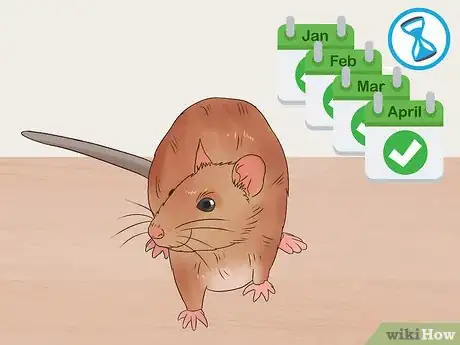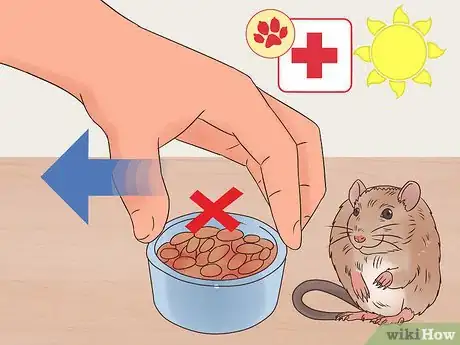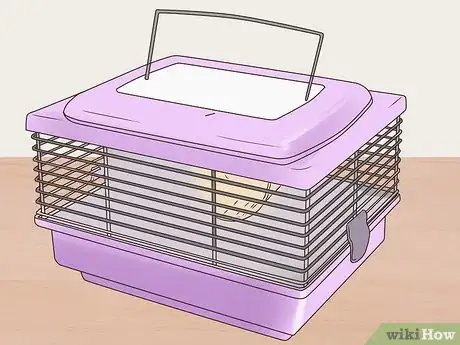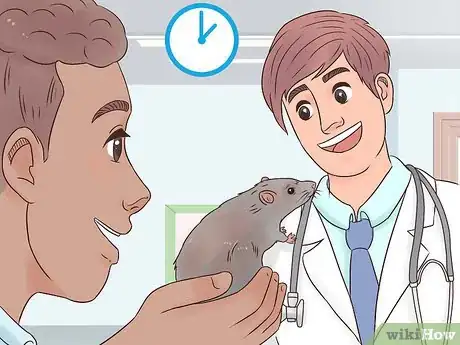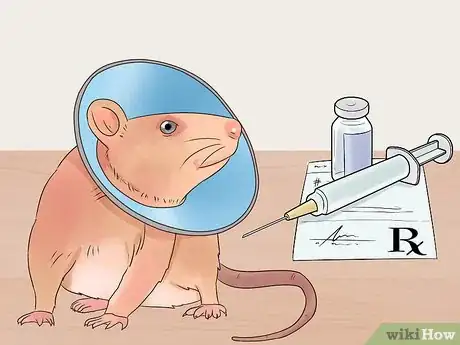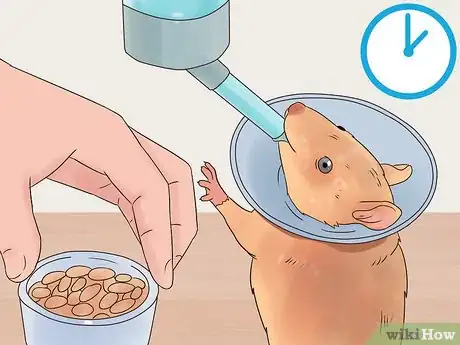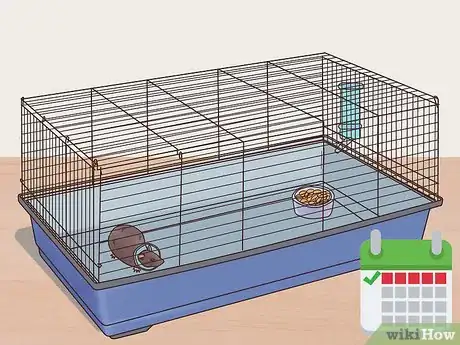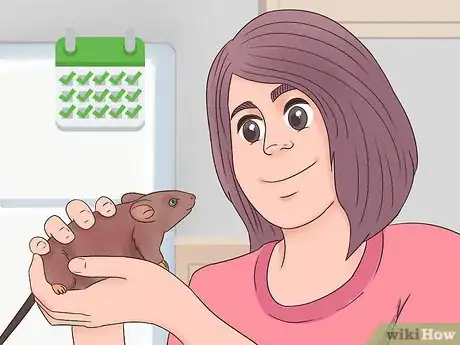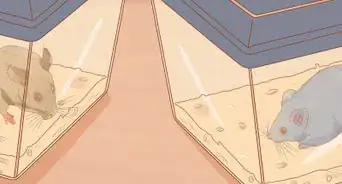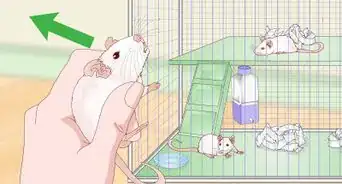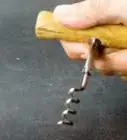This article was co-authored by wikiHow Staff. Our trained team of editors and researchers validate articles for accuracy and comprehensiveness. wikiHow's Content Management Team carefully monitors the work from our editorial staff to ensure that each article is backed by trusted research and meets our high quality standards.
This article has been viewed 9,584 times.
Learn more...
Desexing is another term for spaying or neutering. For male rats, this procedure involves the removal of the animal’s testicles. For female rats, a vet takes out the animal’s ovaries and uterus.[1] Since desexing is a type of surgery, it must to be performed by a vet. It’s important to find an experienced vet you trust, and then follow all pre-operative and post-operative recommendations.
Steps
Preparing Your Rat for Surgery
-
1Wait until your rat is at least 4 months old. It is best to desex your rat when it is between 4 and 6 months of age.[2]
- If you currently have both male and female rats, keep them separated until after spaying or neutering. Rats can breed from 5 weeks of age. After giving birth, female rats are able to get pregnant again within 24 hours![3]
-
2Schedule the surgery ahead of time with an experienced vet. If you don’t currently have a vet, look for a small animal vet or an exotic animal vet.[4] The vet may want to examine your rat or take bloodwork in advance.[5] These precautions are ways of checking that your pet rat is healthy enough to undergo surgery. Follow any pre-operative instructions provided by the vet.
- Rats are prone to rapid heat loss during surgical procedures. Ask how your vet plans to deal with this. A hot water blanket, gloves containing warm water, or a warm fluid bag may be used.
Advertisement -
3Take away your rat's food on the morning of the surgery. However, you should feed your rat as usual up until that point. Since rats are unable to vomit, fasting is unnecessary.[6]
-
4Prepare a secure carrier to transport your rat to the vet. Cat carriers or critter carriers work well. Line the carrier with a blanket so that your pet has a way to hide if it feels frightened.
- Be careful not to trap your rat's tail in the carrier—close it gently and slowly.
-
5Bring your rat to the vet clinic or hospital at the appointed time. At drop-off, ask when your pet will be ready to come home.
- If you request it, a clinic staff member is often willing to call and inform you that the surgery is over, even if you need to wait several more hours before collecting your pet.
Caring for Your Rat after Surgery
-
1Follow all the post-operative recommendations provided by the vet. This includes giving your pet pain medication. You may also receive a collar to put on your rat, to stop it from licking or chewing the surgical site.
-
2Provide your rat with food and water right away. However, your pet may not express interest in eating or drinking for 12 to 24 hours post-surgery. [7] That's fine but, if your rat still doesn't show interest in food after that period of time, check in with your vet. Anorexia is a possible symptom of internal bleeding, a complication that very rarely happens following this surgery.[8]
- Encourage your rat to eat by providing some of its favorite foods.
-
3Create a clean, private space for your rat. If you have other rats, separate your pet for a period of 5 to 7 days. Your rat needs a clean environment to further reduce the minimal chance of infection.[9]
- A small pet carrier often works well for this purpose.
-
4Discourage your rat from doing too much after surgery. In rare cases, complications such as internal bleeding can occur if your rat is overly active.
-
5Check the surgery site several times a day. Complications are not common, but if your pet’s wound doesn’t appear to be healing well, or if your rat interferes with the incision site, contact your vet.
- Signs of infection include swelling, redness, irritation, or pus around the incision site.[12]
- Research the nearest emergency vet that is equipped to handle rats, in case your rat develops complications after your regular vet office closes. Program that number into your phone.
Warnings
- Any surgery involves risk. Complications are rare when desexing rats. However, definitely inform your vet if you think your rat may be unwell on the day of surgery.⧼thumbs_response⧽
References
- ↑ https://www.westtoowoombavetsurgery.com.au/wildlife-exotic-care/rodent-desexing/
- ↑ https://vcahospitals.com/know-your-pet/neutering-in-rats
- ↑ https://www.bluecross.org.uk/pet-advice/caring-your-rat
- ↑ https://petcentral.chewy.com/directory-of-veterinarians-for-exotic-small-mammals/
- ↑ https://vcahospitals.com/know-your-pet/neutering-in-rats
- ↑ http://web.jhu.edu/animalcare/procedures/survival-rodents.html#animalprep
- ↑ https://vcahospitals.com/know-your-pet/neutering-in-rats
- ↑ https://vcahospitals.com/know-your-pet/neutering-in-rats
- ↑ https://vcahospitals.com/know-your-pet/neutering-in-rats
